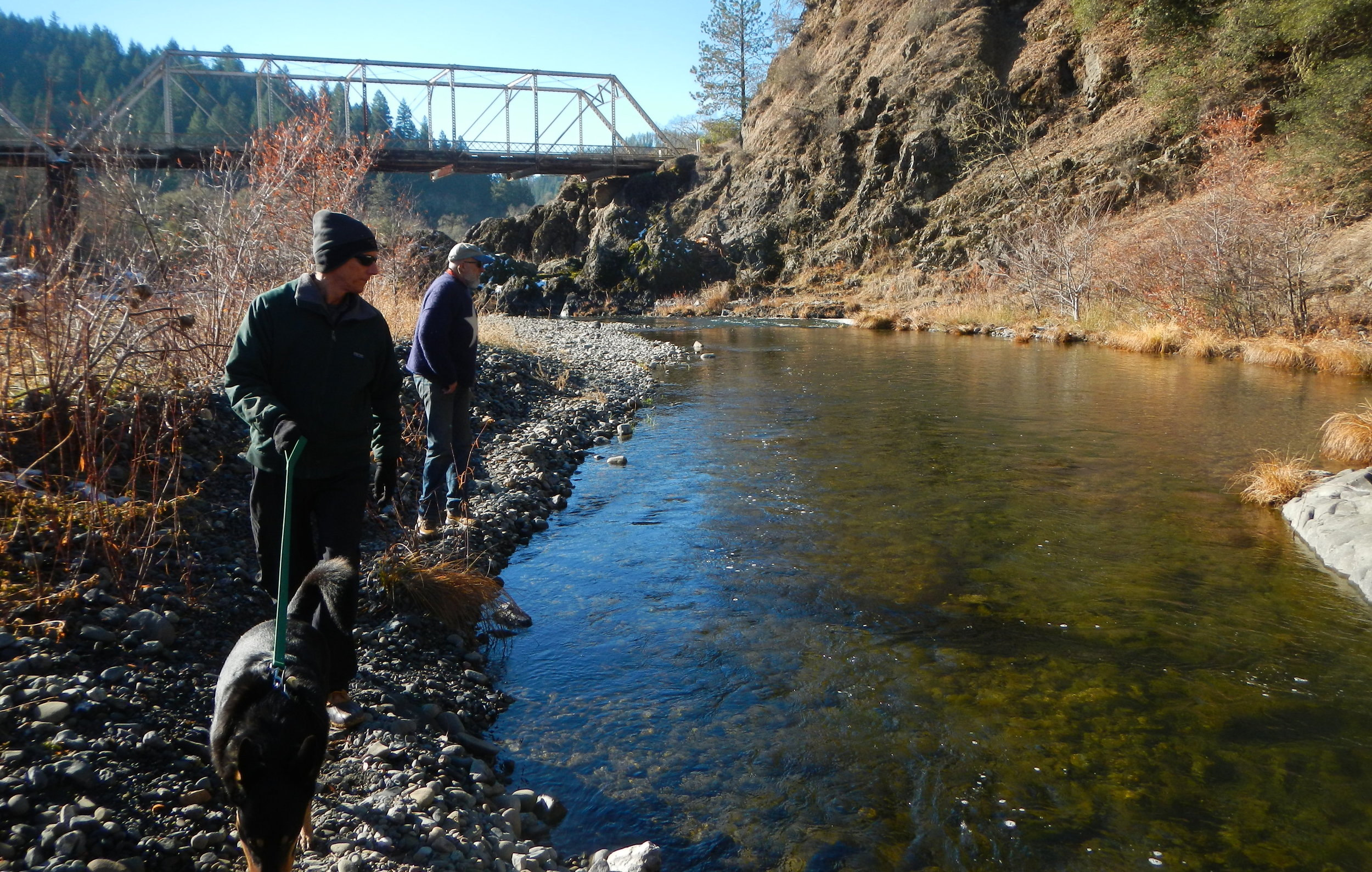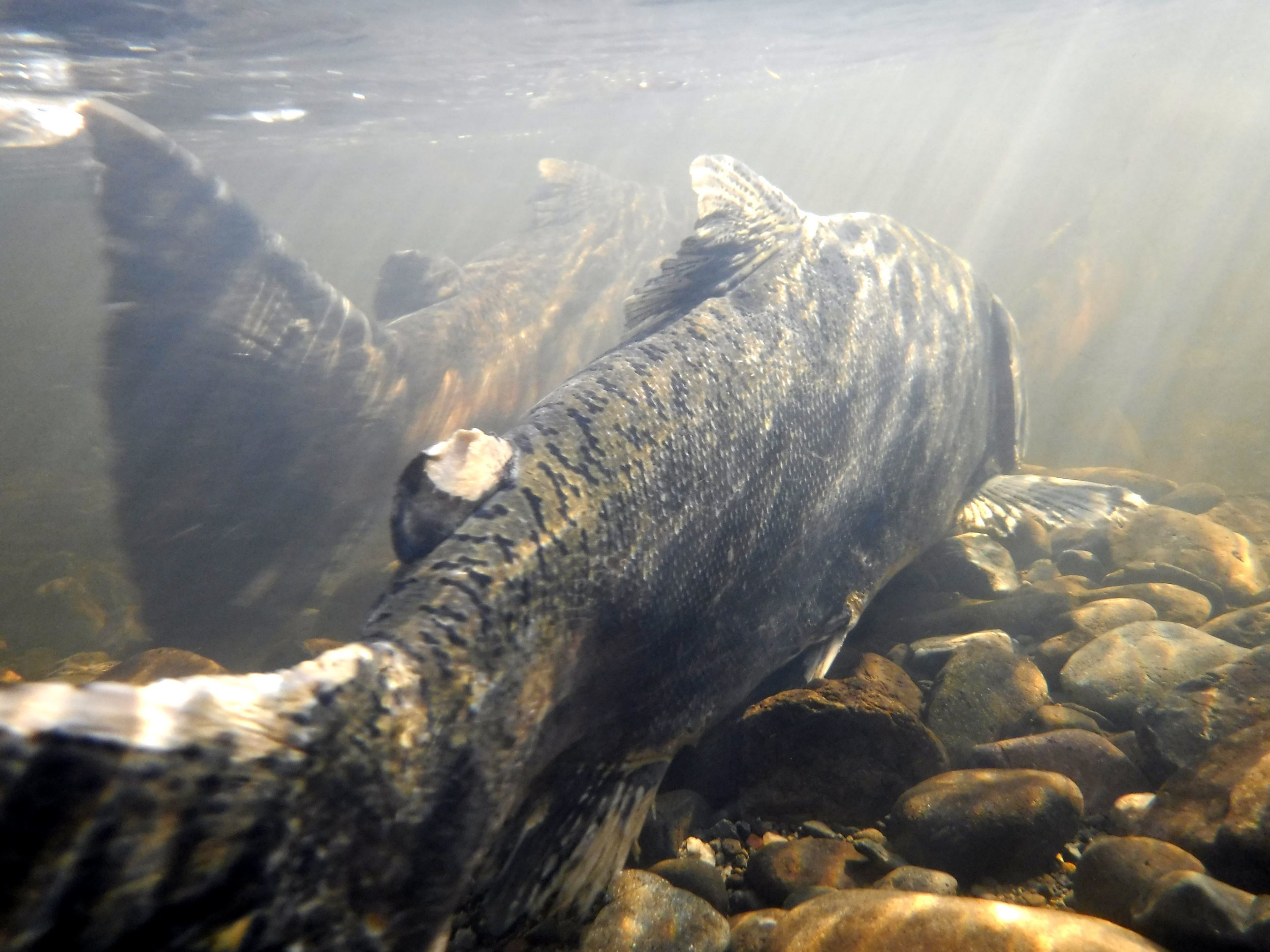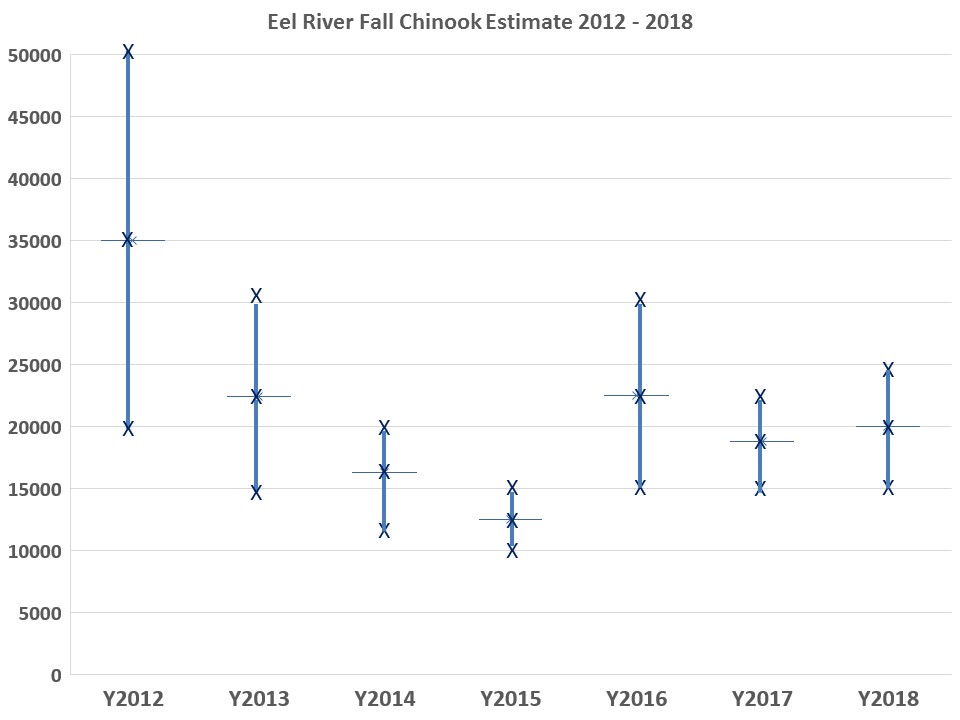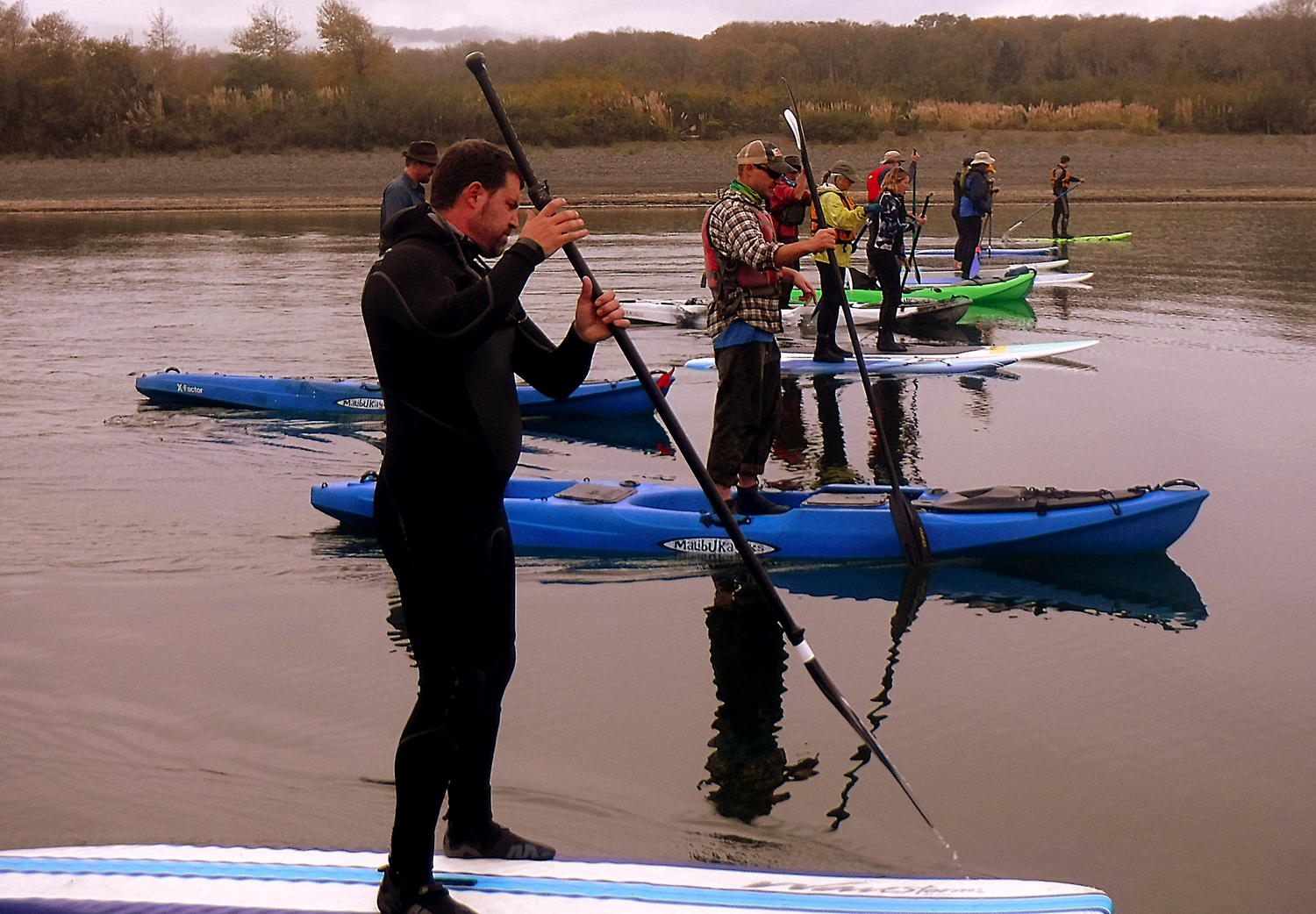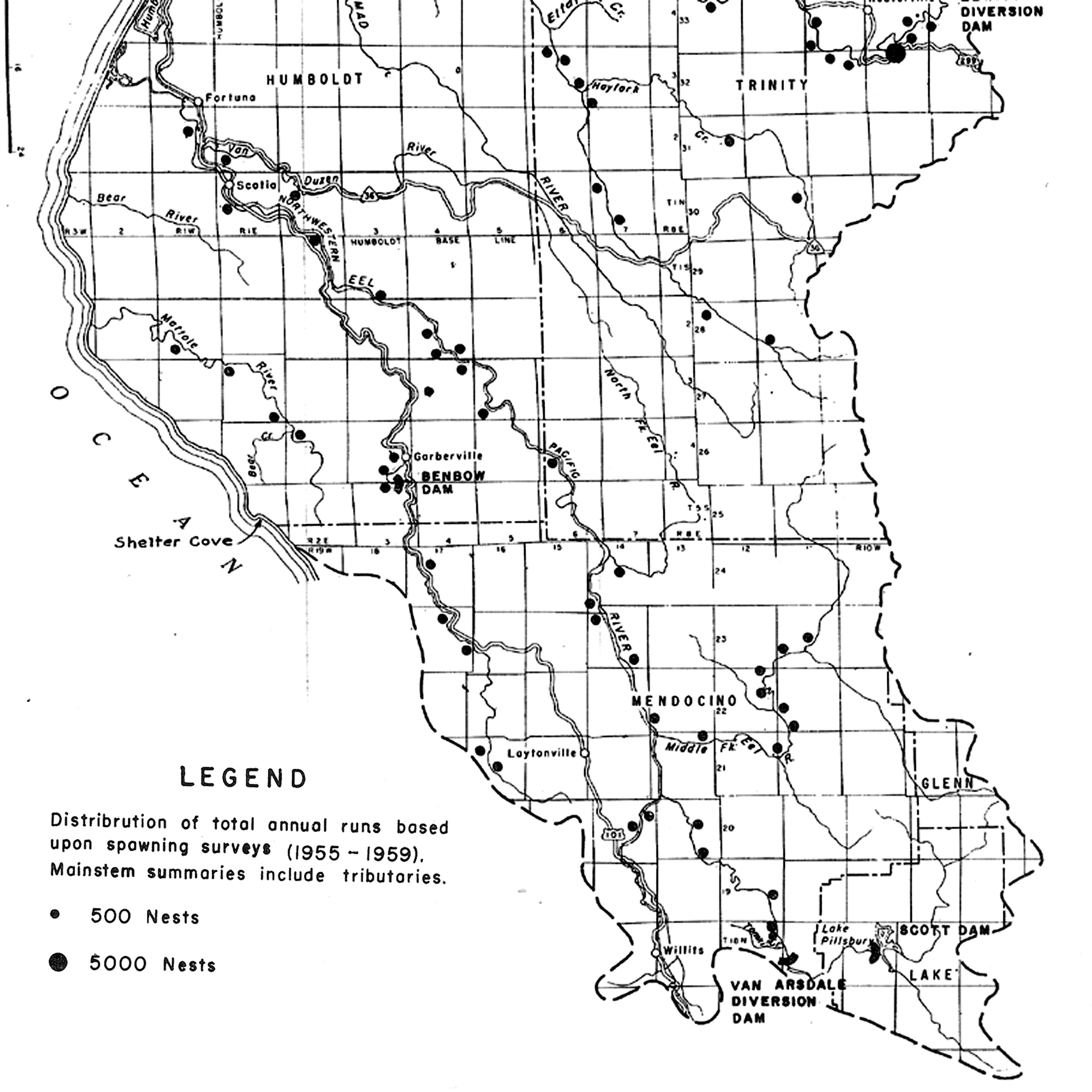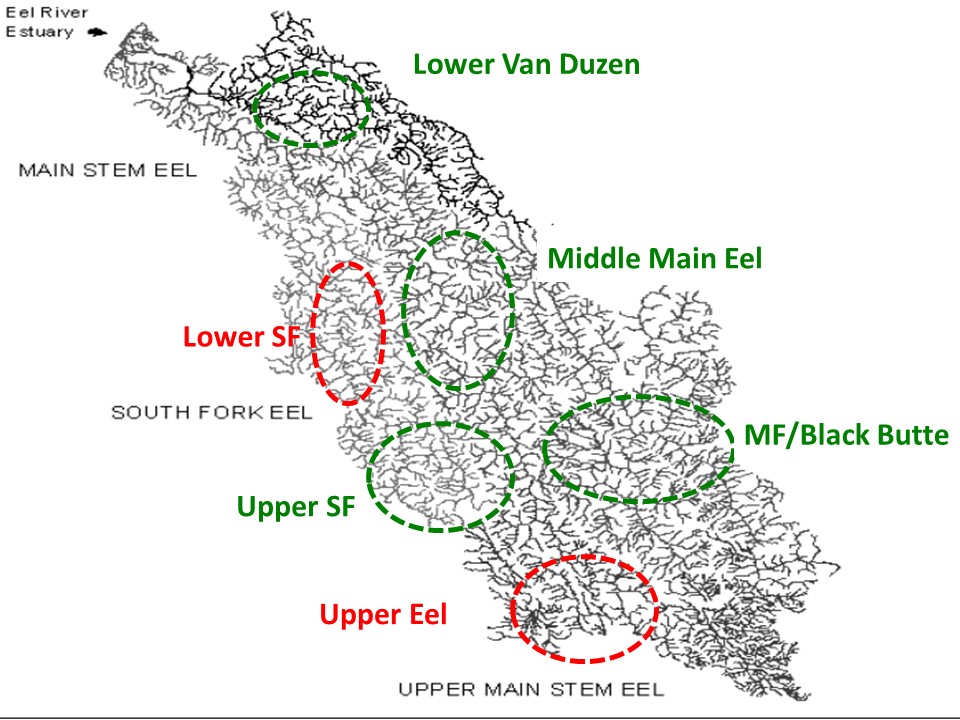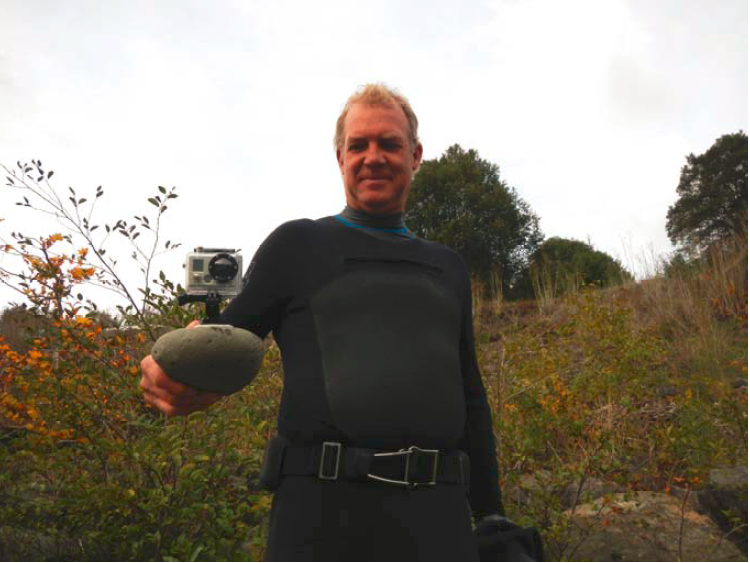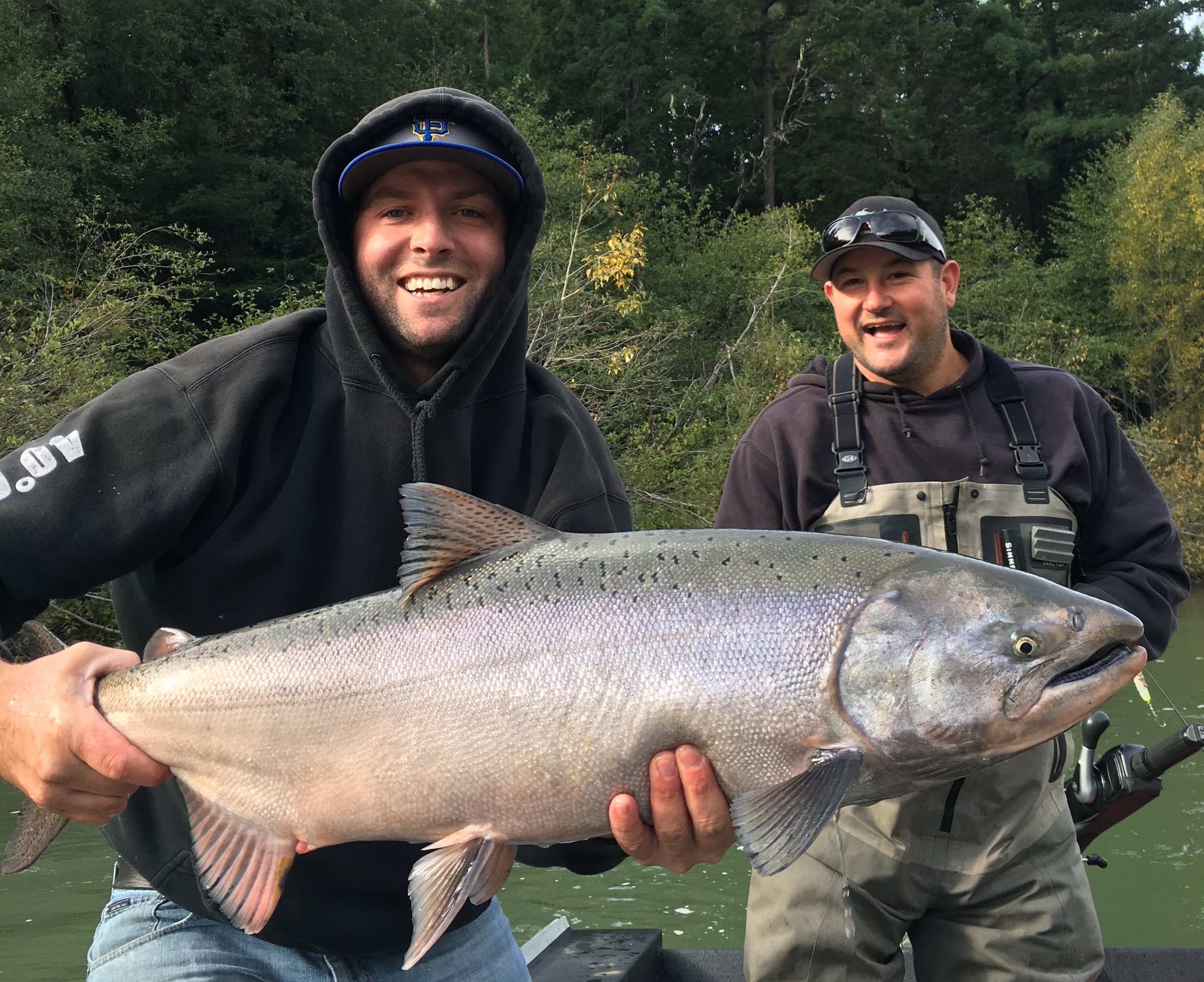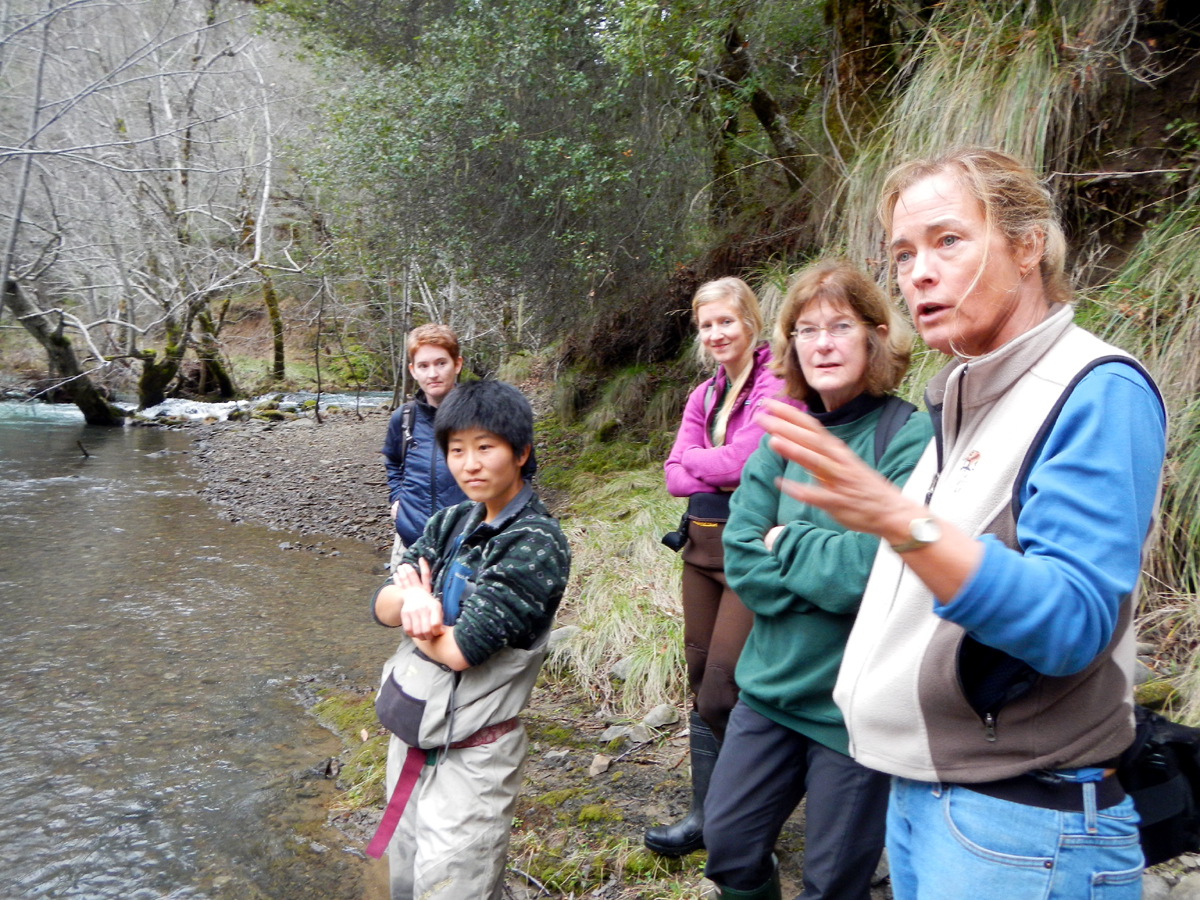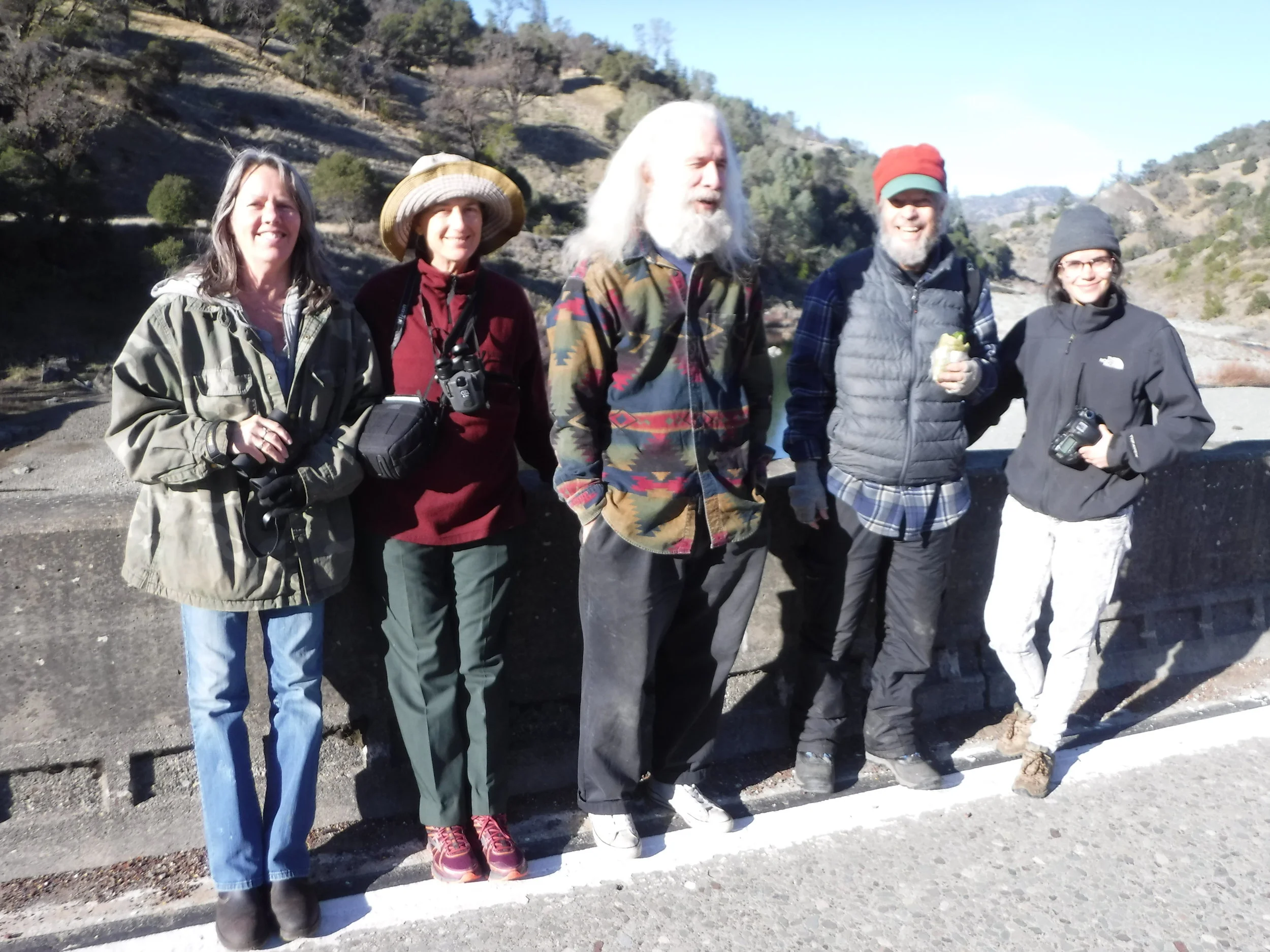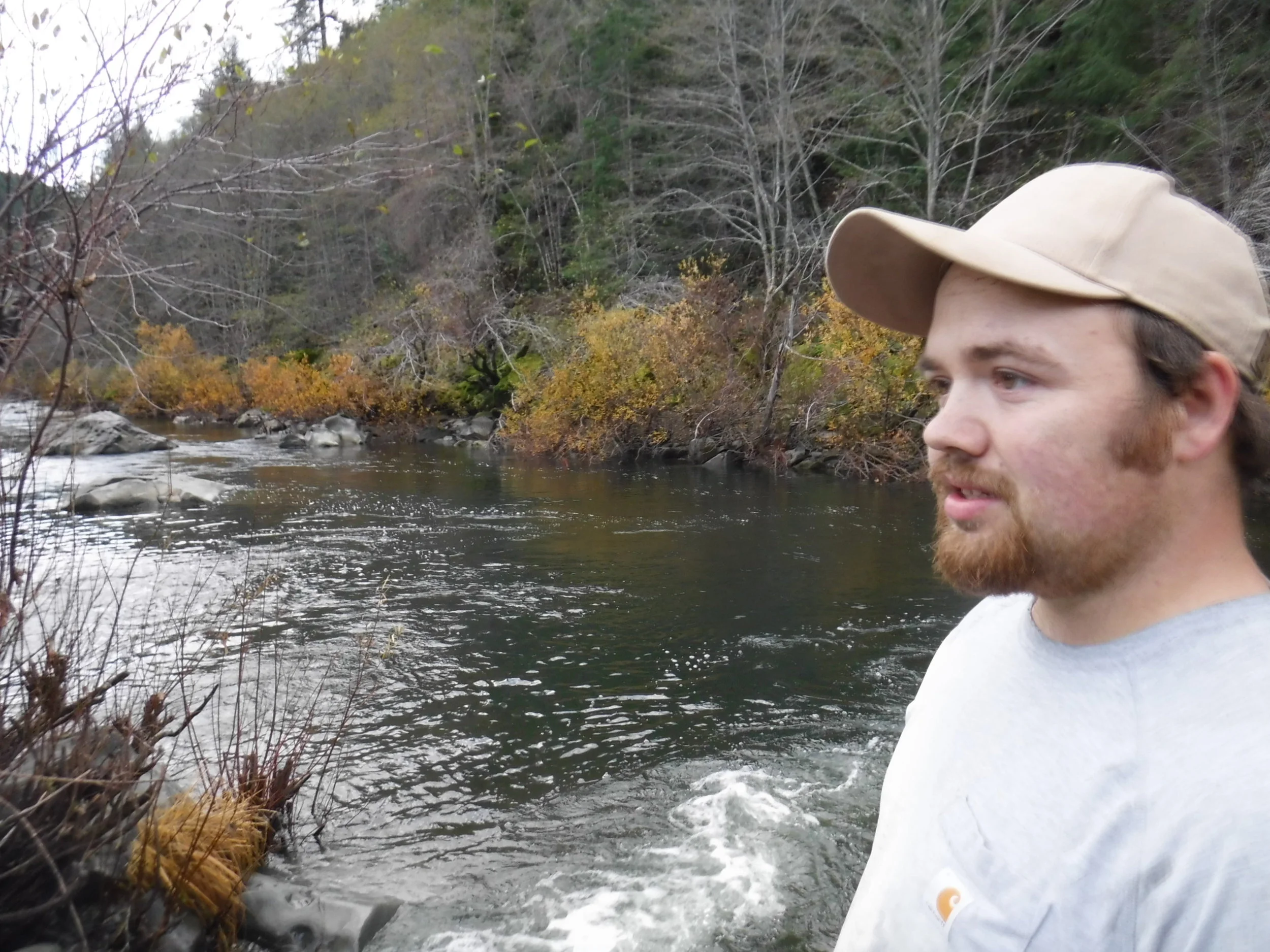Fall Chinook Assessment
At community scoping meetings in 2011, attendees worried about whether the Pacific salmon species of the Eel River were going extinct. Scientists from the University of California Davis estimated that the population of the most iconic of these species, the fall Chinook salmon, might be as low as 1,000 and that that they might be extinct within 50 years. Survey data from agencies was not widely available and people said they wanted more information on fish status. Since fall Chinook enter the lower Eel River and hold in pools, ERRP was able to use dive teams to count early arriving fish. Trained divers were paired with capable less experienced volunteers, like surfers and abalone divers. Once fish begin migration, we use a network of volunteers throughout the Eel River basin to track them from bridges and other vantage points and on the spawning beds. In super dry years, we surveyed in kayaks. Pools have filled in the lower Eel and stand-up paddle board surveys are now used to survey with drone footage used for a low water assessment tool.
Reports are available for all years from 2012-2017 (2012, 2013, 2014, 2015, 2016, 2017).For a complete synthesis of 2012-2017 trends watch the documentary Signs of Resilience.
We use U.S. Fish and Wildlife maps of salmon redds based on surveys from 1955-1958 to estimate current capacity in recovered reaches, but returns to some sub-basins like the lower South Fork and upper Eel River above Dos Rios appear in decline (see map below).


